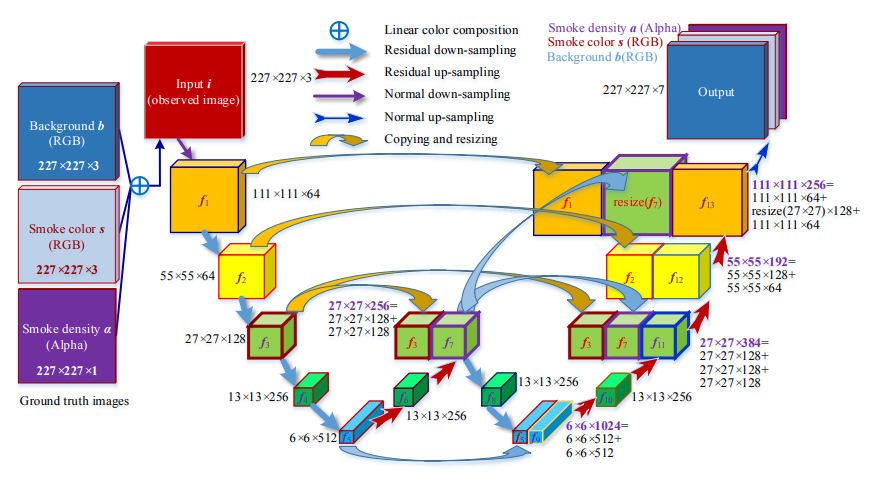- ALL COMPUTER, ELECTRONICS AND MECHANICAL COURSES AVAILABLE…. PROJECT GUIDANCE SINCE 2004. FOR FURTHER DETAILS CALL 9443117328


Projects > ELECTRONICS > 2020 > IEEE > DIGITAL IMAGE PROCESSING
Smoke density estimation from a single image is a totally new but highly ill-posed problem. To solve the problem, we stack several convolutional encoder-decoder structures together to propose a wave-shaped neural network, termed W-Net. Stacking encoder-decoders directly increases the network depth, leading to the enlargement of receptive fields for encoding more semantic information. To maximize the degrees of feature re-usage, we copy and resize the outputs of encoding layers to corresponding decoding layers, and then concatenate them to implement shortcut connections for improving spatial accuracy. The crests and troughs of W-Net are special structures containing abundant localization and semantic information, so we also use short-cut connections between these structures and decoding layers. Estimated smoke density is useful in many applications, such as smoke segmentation, smoke detection, disaster simulation.
Spatial pyramid pooling (SPP), R-CNN
The main contributions of this paper are as follows: 1) We propose an end-to-end smoke density estimation method using full convolutional networks (FCN). The proposed deep network can be trained end-to-end and used to estimate a smoke density map from an observed image of arbitrary size. 2) We stack several non-symmetric encoder-decoder networks together to propose wave-shaped structures, which greatly expands receptive fields of each neuron, and forms special wave structures, including troughs and wrests. The troughs of wave structures consist of abundant semantic information for dense classification over all pixels, while the crests of wave structures contain more local or median-scale information for smoke localization. To improve accuracy, we use short-cut connections between troughs, crests and decoding layers. 3) We propose a complicated loss function that includes four errors of smoke density, smoke color, background color, and composited observed color. These four-error terms jointly regulate the training of our proposed network.
BLOCK DIAGRAM
